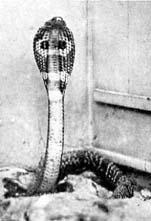No longer uptodate!
After nearly 15 years, this website is being decommissioned. For a while, this old version will still be reachable, but it will no longer show reliable information about events at ausland,
The new version of our website can be found here: https://ausland.berlin
berlin cobra #4

berlin cobra #04
sabine vogel - curator
elisabeth king - accordeon
fernanda farah - voice
ernst karel - trumpet
boris hauf - sax
derek shirley - bass
erik schaeffer - drums
aaron snyder - drums
ethan schaffner- banjo
augustin maurs - cello
alexander frangenheim - bass
sabine vogel - flute
ignaz schick - turntables
nathan fuhr - prompter
**** 2 SETS !!!
1. Set : 21:00
2. Set : 23:00 ****
“I created Cobra to make beautiful music. I quit doing it because it makes monsters out of people”. John Zorn to Nathan Fuhr (March 1999, New York)
> more text !
Vlucht Magazine, April 2004
(unabridged version of print text)
text: Francisco Gonzalez
photos: Nesrine Khodr
www.vluchtmagazine.nl
Collision Palace’s Nathan Fuhr
SERIOUSLY PLAYING
..
I finally met Nathan Fuhr (27) by chance in Amsterdam at OT301, where I
spotted him behind the DJ table for a dance festival closing party. He is the
leader of Collision Palace, a large collective of musicians (and dancers too on
occasion) from a genuine mix of stylistic backgrounds, whom he directs in
the exploration of different improvisation languages. He has played bass in
Cobra (John Zorn's most notorious "game-piece") with Zorn himself in New
York, before moving to Europe and instigating the Amsterdam-based Collision
Palace (an apparently democratic endeavor, as he admits to not being keen
on the name of the band, but was out-voted!). I attended some of their
rehearsals before seeing them live in two splendidly different Cobra
performances in 3 days, at the Bimhuis and OT301.
Nathan is the artistic director and conductor of the ensemble, but to my eyes
he is much more a performer himself. His way of gathering the band
members’ energy and redistributing it back via specific signals and
movements has more to do with dance, martial arts, or even shamanism than
with simply prompting (Zorn’s term for the DJ-like director of Cobra). This is
not free or even interpretive improvisation; the visceral clarity and physicality
of his directing almost seem to declare war on the well-run territory of improv
sans language, which is not to say that he does not balance such command
with moments of making himself fluid or invisible, trusting players’ own
commands, letting the music just breathe, or even sharing laughter (with
people on and off the stage). He brought Cobra as it should be but rarely is; not as a demonstration of a game system (which is admittedly very
entertaining and engaging in itself) or a representation of its legendary creator,
but fully present and recognizing the immediate unique chemistry and latent
interactive potential of 13 diverse individuals assembled on the stage in front
of him, and using Cobra as a language through which their creative energies
flow, collide, synergize and grow exponentially.
And there is a certain social alchemy at work here too in the way he brings
these people together, in that these are all first-class musical personalities
well-known from different respective scenes in Holland (including commuters
from Paris and New York) who otherwise might never be found in the same
room together. It is from the beginning a highly combustible presentation of
personal comfort zones shared, stretched, resculpted, or sometimes simply
violated until their individual borders are transcended into the birth on an
elevated (occasionally even ecstatic) collective level of "comfort zone"
redefined. This presentation was framed and drawn into harmony by Fuhr's
way, upon entering the space, of establishing terms in non-verbal
communication with audience and his ensemble alike, palms together just
below present eyes, with the grace and selfless air reminiscent of an Indian
classical musician— a balancing yin to the red-hot yang energy of the
performance itself.
Upon my observation in one of our conversations of energy as a core aspect
of the work, his face lit-up, because although Collision Palace is playing via
different preconceived improvisation systems (they've also done projects with
Fred Frith, Robert Ashley, Alison Isadora, and include works of Pauline
Oliveros, Frederic Rzewski, and a premiere by Lee Ranaldo of Sonic Youth in
their repertoire), you can tell Nathan is slowly developing his own language,
and it is definitely through the concept of energy.
When I asked him to describe a CP concert in one sentence, he replied
without hesitation: “We take risks, brew synergy, and go for blood (or Zen in
the case of Oliveros or Isadora!)— and make sure to have fun sharing as
much joy as possible along the way.”
